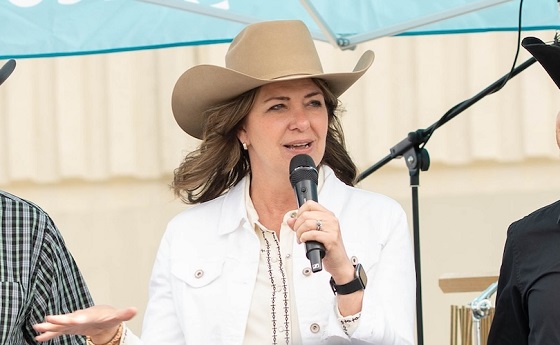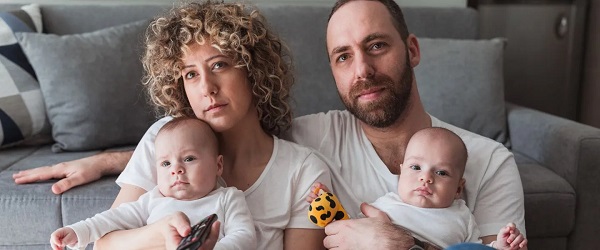Alberta
Alberta Relaunch stage 1 mostly a go for Thursday – Restrictions for Calgary and Brooks
From the Province of Alberta
Alberta is ready for relaunch
Stage one – all areas of Alberta except cities of Calgary and Brooks
- With increased infection prevention and control measures to minimize the risk of increased transmission of infections, some businesses and facilities can start to resume operations on May 14 in all areas except the cities of Calgary and Brooks:
- Retail businesses, such as clothing, furniture and bookstores. All vendors at farmers markets will also be able to operate.
- Museums and art galleries.
- Daycares and out-of-school care with limits on occupancy.
- Hairstyling and barbershops.
- Cafés, restaurants, pubs and bars will be permitted to reopen for table service only at 50 per cent capacity.
- Day camps, including summer school, will be permitted with limits on occupancy.
- Post-secondary institutions will continue to deliver courses; however, there will be more flexibility to include in-person delivery once the existing health order prohibiting in-person classes is lifted.
- Places of worship and funeral services, if they follow specific guidance already online.
- The resumption of some scheduled, non-urgent surgeries will continue gradually.
- Regulated health professions are permitted to offer services as long as they continue to follow approved guidelines set by their professional colleges.
- In Calgary and Brooks, the relaunch will be gradual over 18 days due to higher COVID-19 case numbers in these communities.
Stage one – cities of Calgary and Brooks
Opening May 14:
- Retail businesses, such as clothing, furniture and bookstores. All vendors at farmers markets will also be able to operate.
- Museums and art galleries.
- Daycares and out-of-school care with limits on occupancy.
- The resumption of some scheduled, non-urgent surgeries will continue gradually.
- Regulated health professions are permitted to offer services as long as they continue to follow approved guidelines set by their professional colleges.
Opening May 25:
- Hairstyling and barbershops.
- Cafés, restaurants, pubs and bars will be permitted to reopen for table service only at 50 per cent capacity.
Opening June 1:
- Day camps, including summer school, will be permitted with limits on occupancy.
- Post-secondary institutions will continue to deliver courses; however, there will be more flexibility to include in-person delivery once the existing health order prohibiting in-person classes is lifted.
- Places of worship and funeral services, if they follow specific guidance already online.
The new alberta.ca/bizconnect web page provides business owners with information on health and safety guidelines for general workplaces, as well as sector-specific guidelines for those able to open in stage one. Businesses allowed to reopen during stage one will be subject to strict infection prevention and control measures, and will be carefully monitored for compliance with public health orders. It will be up to each business operator to determine if they are ready to open and ensure all guidance has been met.
Physical distancing requirements of two metres remain in place through all stages of relaunch and hygiene practices will continue to be required of businesses and individuals, along with instructions for Albertans to stay home when exhibiting symptoms such as cough, fever, shortness of breath, runny nose, or sore throat. Albertans are also encouraged to wear non-medical masks when out in public places where keeping a distance of two metres is difficult.
Still not permitted in stage one:
- Gatherings of more than 15 people unless otherwise identified in public health orders or guidance.
- Gatherings of 15 people or fewer must follow personal distancing and other public health guidelines.
- Arts and culture festivals, major sporting events and concerts, all of which involve close physical contact.
- Movie theatres, theatres, pools, recreation centres, arenas, spas, gyms and nightclubs will remain closed.
- Services offered by allied health disciplines like acupuncture and massage therapy.
- Visitors to patients at health-care facilities will continue to be limited; however, outdoor visits are allowed with a designated essential visitor and one other person (a group of up to three people, including the resident), where space permits. However, physical distancing must be practised and all visitors must wear a mask or some other form of face covering.
- In-school classes for kindergarten to Grade 12 students.
Recommendations:
- Travel outside the province is not recommended.
- Remote working is advised where possible.
- Encourage Albertans in Calgary and Brooks to wait to access services upon reopening in their communities rather than travelling for services.
- Albertans are encouraged to download the ABTraceTogether mobile contact tracing app and use it when in public.
Progression to stage two will be determined by the success of stage one, considering health-care system capacity, hospitalization and intensive care unit (ICU) cases, and infection rates. For more information, visit alberta.ca/RelaunchStrategy.
Quick facts
- Relaunch stages will include an evaluation and monitoring period to determine if restrictions should be adjusted. Triggers that will inform decisions on the lessening or tightening of restrictions include hospitalizations and intensive care unit (ICU) occupancy.
- Confirmed cases, the percentage of positive results and the rate of infection will be monitored on an ongoing basis to inform proactive responses in localized areas of the province.
- Decisions will be applied at both provincial and local levels, where necessary. While restrictions are gradually eased across the province, an outbreak may mean that they need to be strengthened temporarily in a local area.
- The most important measure Albertans can take to prevent respiratory illnesses, including COVID-19, is to practise physical distancing and good hygiene.
- This includes cleaning your hands regularly for at least 20 seconds, avoiding touching your face, coughing or sneezing into your elbow or sleeve, and disposing of tissues appropriately.
Alberta
Danielle Smith slams Skate Canada for stopping events in Alberta over ban on men in women’s sports

From LifeSiteNews
The Alberta premier has denounced Skate Canada as ‘disgraceful’ for refusing to host events in the province because of a ban on ‘transgender’ men in women’s sports.
Alberta Premier Danielle Smith has demanded an apology after Skate Canada refused to continue holding events in Alberta.
In a December 16 post on X, Smith denounced Skate Canada’s recent decision to stop holding competitions in Alberta due to a provincial law keeping gender-confused men from competing in women’s sports.
“Women and girls have the right to play competitive sports in a safe and fair environment against other biological females,” Smith declared. “This view is held by a vast majority of Albertans and Canadians. It is also common sense and common decency.”
Women and girls have the right to play competitive sports in a safe and fair environment against other biological females.
This view is held by a vast majority of Albertans and Canadians. It is also common sense and common decency.
Skate Canada‘s refusal to hold events in… pic.twitter.com/n4vbkTx6B0
— Danielle Smith (@ABDanielleSmith) December 16, 2025
“Skate Canada‘s refusal to hold events in Alberta because we choose to protect women and girls in sport is disgraceful,” she declared.
“We expect they will apologize and adjust their policies once they realize they are not only compromising the fairness and safety of their athletes, but are also offside with the international community, including the International Olympic Committee, which is moving in the same direction as Alberta,” Smith continued.
Earlier this week, Skate Canada announced their decision in a statement to CBC News, saying, “Following a careful assessment of Alberta’s Fairness and Safety in Sport Act, Skate Canada has determined that we are unable to host events in the province while maintaining our national standards for safe and inclusive sport.”
Under Alberta’s Fairness and Safety in Sport Act, passed last December, biological men who claim to be women are prevented from competing in women’s sports.
Notably, Skate Canada’s statement failed to address safety and fairness concerns for women who are forced to compete against stronger, and sometimes violent, male competitors who claim to be women.
Under their 2023 policy, Skate Canada states “skaters in domestic events sanctioned by Skate Canada who identify as trans are able to participate in the gender category in which they identify.”
While Skate Canada maintains that gender-confused men should compete against women, the International Olympic Committee is reportedly moving to ban gender-confused men from women’s Olympic sports.
The move comes after studies have repeatedly revealed what almost everyone already knew was true, namely that males have a considerable innate advantage over women in athletics.
Indeed, a recent study published in Sports Medicine found that a year of “transgender” hormone drugs results in “very modest changes” in the inherent strength advantages of men.
Additionally, male athletes competing in women’s sports are known to be violent, especially toward female athletes who oppose their dominance in women’s sports.
Last August, Albertan male powerlifter “Anne” Andres was suspended for six months after a slew of death threats and harassments against his female competitors.
In February, Andres ranted about why men should be able to compete in women’s competitions, calling for “the Ontario lifter” who opposes this, apparently referring to powerlifter April Hutchinson, to “die painfully.”
Interestingly, while Andres was suspended for six months for issuing death threats, Hutchinson was suspended for two years after publicly condemning him for stealing victories from women and then mocking his female competitors on social media. Her suspension was later reduced to a year.
Alberta
Alberta’s huge oil sands reserves dwarf U.S. shale

From the Canadian Energy Centre
By Will Gibson
Oil sands could maintain current production rates for more than 140 years
Investor interest in Canadian oil producers, primarily in the Alberta oil sands, has picked up, and not only because of expanded export capacity from the Trans Mountain pipeline.
Enverus Intelligence Research says the real draw — and a major factor behind oil sands equities outperforming U.S. peers by about 40 per cent since January 2024 — is the resource Trans Mountain helps unlock.
Alberta’s oil sands contain 167 billion barrels of reserves, nearly four times the volume in the United States.
Today’s oil sands operators hold more than twice the available high-quality resources compared to U.S. shale producers, Enverus reports.
“It’s a huge number — 167 billion barrels — when Alberta only produces about three million barrels a day right now,” said Mike Verney, executive vice-president at McDaniel & Associates, which earlier this year updated the province’s oil and gas reserves on behalf of the Alberta Energy Regulator.
Already fourth in the world, the assessment found Alberta’s oil reserves increased by seven billion barrels.
Verney said the rise in reserves despite record production is in part a result of improved processes and technology.
“Oil sands companies can produce for decades at the same economic threshold as they do today. That’s a great place to be,” said Michael Berger, a senior analyst with Enverus.
BMO Capital Markets estimates that Alberta’s oil sands reserves could maintain current production rates for more than 140 years.
The long-term picture looks different south of the border.
The U.S. Energy Information Administration projects that American production will peak before 2030 and enter a long period of decline.
Having a lasting stable source of supply is important as world oil demand is expected to remain strong for decades to come.
This is particularly true in Asia, the target market for oil exports off Canada’s West Coast.
The International Energy Agency (IEA) projects oil demand in the Asia-Pacific region will go from 35 million barrels per day in 2024 to 41 million barrels per day in 2050.
The growing appeal of Alberta oil in Asian markets shows up not only in expanded Trans Mountain shipments, but also in Canadian crude being “re-exported” from U.S. Gulf Coast terminals.
According to RBN Energy, Asian buyers – primarily in China – are now the main non-U.S. buyers from Trans Mountain, while India dominates purchases of re-exports from the U.S. Gulf Coast. .
BMO said the oil sands offers advantages both in steady supply and lower overall environmental impacts.
“Not only is the resulting stability ideally suited to backfill anticipated declines in world oil supply, but the long-term physical footprint may also be meaningfully lower given large-scale concentrated emissions, high water recycling rates and low well declines,” BMO analysts said.
-

 Community2 days ago
Community2 days agoCharitable giving on the decline in Canada
-

 Business1 day ago
Business1 day agoCanada’s recent economic growth performance has been awful
-

 Alberta1 day ago
Alberta1 day agoCanada’s New Green Deal
-

 armed forces1 day ago
armed forces1 day agoOttawa’s Newly Released Defence Plan Crosses a Dangerous Line
-

 Alberta1 day ago
Alberta1 day agoAlberta’s huge oil sands reserves dwarf U.S. shale
-

 Health1 day ago
Health1 day agoSaskatchewan woman approved for euthanasia urged to seek medical help in Canada rather than US
-

 Business1 day ago
Business1 day agoCOP30 finally admits what resource workers already knew: prosperity and lower emissions must go hand in hand
-

 Health1 day ago
Health1 day agoCanadian gov’t considers sharing census data on gender-confused children






